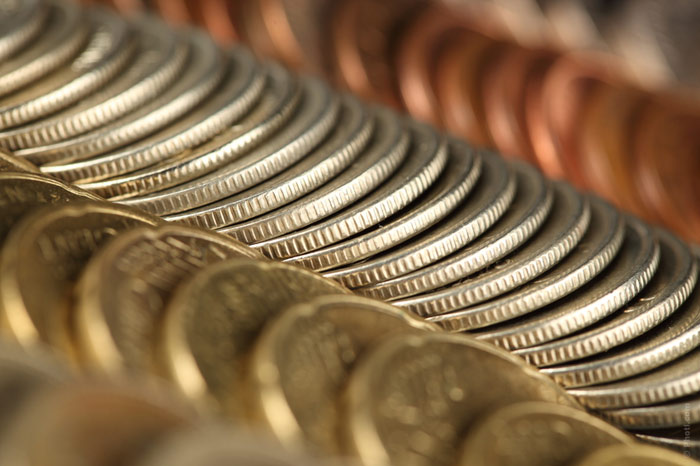Is it possible to assess a country’s wealth more or less correctly? The most common way to do this is to rank countries in accordance with the volume of their gross domestic product, abbreviated to GDP, which designates the volume of the country’s economy. But it constitutes only one factor of the calculation, because when establishing the wealth of the country, we have to know how many parts it has to be divided into, or, plainly speaking, how many people are there in a given nation to profit by its income.

So, the best instrument for assessment is the ratio of GDP to population which shows how much money the nation has per capita. For instance, China is a very rich country with an impressively high GDP; but if we divide the amount into the number of its population (which runs to over 1.3 billion), the ratio comes out quite low. Whereas countries that do not have a high GDP show a high ratio due to a relatively small population. For all that they can be left outside some of the wealthiest country lists.
So Global Finance came up with a more insightful list of rich countries employing the PPP principle, that is, a purchasing power parity, taking into consideration for each country the GDP factor, the population (figures registered as of 2013), the relative living standards and the rates of inflation. Here are the world’s foremost ten countries whose residents can be regarded as the richest on the planet.
Australia with $44,073.81 GDP per capita
The GDP for the southern continent comes to $1.44 trillion. Divided into the 28.8 million population, it gives the average annual gross income for an Australian at a little less than $50 and half thousand. While the current picture looks attractive, the country’s economy is not at its best: the data for this year are far from inspiring, and the Australian dollar is fluctuating somewhere at the level it hit in 2009 at the time of a global financial crisis. What’s more, the products most in demand in the Australian economy – agricultural and mining ones – are losing in sales, partly due to China withdrawing its demands for them. According to the Standard & Poor financial ratings agency, Australia has to reconsider its budget if it wants to avoid its credit score dropping.
Switzerland with $46,474.95 GDP per capita
As Greece’s economy continues to falter creating a deal of uncertainty, the Swiss National Bank is working hard to keep the rate of the Swiss franc as low as it can be. The necessity of the task is revealed in the Big Mac index as recently published in The Economist – a comparative compilation of prices tagged on Big Macs in various countries which gives an interesting glimpse at the level of currencies. The index shows the Swiss price to be about $6.80, making Swiss Big Macs easily the dearest in the whole world. The Swiss franc is therefore overvalued by a staggering 42.4%. It’s not as if the country had many problems with this: its average annual gross income comes third in the world hitting the very respectable amount of $54,236, and its export goods retain their popularity and go well at high prices (think of Swiss watches, for one).
The UAE with $49,883.58 GDP per capita
The United Arab Emirates is known to have an economy that is firmly based on oil revenues, and it can hardly be any other way; yet the country tries to rearrange the economy and succeeded in becoming less oil-reliant than any other nation belonging to the Gulf Cooperation Council. Its non-oil sector reached up to 8.1% last year and now constitutes over 68% of the GDP whose price is unchanged – which is very well considering that oil prices have been decreasing worldwide. Having benefited from these changes, the Emirates are proceeding with the scheme of diversifying the economy aiming to raise the non-oil sector to three-fourths of the GDP within the next decade. The surprising fact is that the nation’s GDP runs to $401 billion, and it wouldn’t make into Top Ten on that score only.
The USA with $51,248.21 GDP per capita
Many sources cite the USA as the country with the greatest world economy as showcased by its fabulous GDP of $17.4 trillion – more than 15% of the world’s GDP. Then again, the US comes third in the world in terms of population, and its 321 million people make the nation but the seventh on the list. The nation’s economy was unstable a number of times during the past century, but the latest reports from the federal reserve were gratifying, showing, for example, a very low unemployment rate (5.3%), the best since 2008. The average annual income of an American is calculated to be $56,340, and that is the biggest salary throughout the world.
Hong Kong with $53,432.23 GDP per capita
China’s GDP boasts the sum of more than $10 trillion, yet it occupies the 90th place only; whereas Hong Kong, being China’s autonomous territory, puts itself easily on the list of the leaders. Hong Kong’s GDP is pegged at $289 billion, so with a 7-million population (a little more, to be precise) its per capita place is much higher. According to the International Labor Organization, workers there draw the monthly average salary of $1,780, which is a pleasing sum. Nevertheless there are factors which can affect the place’s economic state – China’s latest policy coupled with its total economic sagging causes serious discontent in Hong Kong. Moreover, it’s tourism is deteriorating, and retail sales dropping. As expert economists claim, Hong Kong is in dire need of a stable tourism sector – and fresh growth factors for diversifying.
Brunei Darussalam with $55,111.20 GDP per capita
As for the GDP, Brunei is not very impressive – it holds the 118th place globally with its $15.1 billion, but the not-so-large population (not even half a million) provides it with a healthy and comfortable fifth place. The country’s peculiar feature is that its citizens are not levied taxes on income and sale. The darker side of the picture is that Brunei’s position is the most precarious of all. The fact is its economy is too much dependent on oil, and the state boosted its oil production, thereby lowering oil prices globally. What’s more, the BP World Energy Outlook reports that Brunei‘s oil is good for only 22 years more. Diversifying economy becomes its momentous task, and the nation started to introduce changes like setting up a stock exchange for supporting small businesses. They have to be quick enough about it.
Norway with $56,663.47 GDP per capita
It’s fairly easy for Norway to occupy a high place on this list possessing $500 billion’s worth GDP and a 5 million plus population. The country that stretches along a coastline makes good use of its plentiful natural resources. Hydroelectric energy, petro and fishing provide Norwegians with the average gross income of more than $49,500 per year, which is quite substantial. The only worrying fact is that, as the Organization for Economic Cooperation and Development (OCDE) informs, many people in Norway are living far outside their income, especially the young generations. The nation holds now the dubious honor of the most heavily amassed personal debts among the European countries. It may be that young Norwegians will realize soon how much changes in oil prices can alter the current state of things.
Singapore with $61,567.28 GDP per capita
Singapore’s population is less than 5.5 million people and its GDP runs to $308 billion, notching the average income at $3,694 per month. It is the highest income in Asia and it loses only to Australia in the Pacific region. What’s more, the nation is economically famous for its firm orientation on markets and business support, which is a stronger scheme than some other nations on this list can show. Of course Singapore has problems – its unemployment rate is going up and the economic growth has been slowing down recently, but there is nothing that can bring about dramatic alteration in the country’s situation.
Luxembourg with $79,593.91 GDP per capita
The $62.3-billion amount of the small country’s GDP doesn’t run to anything much (the world’s 73rd place), yet divided by its very thin population that is not over 600,000, the nation’s GDP per capita allows it to hold an enviable place. Luxembourg’s territory does not cover 1,000 square miles, yet the economy relies on such strongholds as well-developed steel production, stable industry and international banking which constitutes the most important sector. It’s enough to say that the Green Heart of Europe depends largely on the tiny country’s banking system. The average income for Luxembourg is $56,021 per year – a very respectable figure.
Qatar with $105,091.42 GDP per capita
Qatar can be truly tagged as the richest nation – the GDP goes over $200 billion while the population is a little more than 2.3 million. It goes without saying that its economy is dependent on gasoline and natural liquid gas, but Qatar is intent on diversifying its economy to a respectable extent. While its hydrocarbon sector is dropping, this year’s economic growth registered more than 4%. Mostly this increase owes to construction, which reached a solid 11.4% due to major projects like the capital’s underground, the Downtown Doha development and other large-scale infrastructural schemes. The transportation sector brought in as much as 19.21% profit in the first half of this year. This country knows how to augment its riches!










